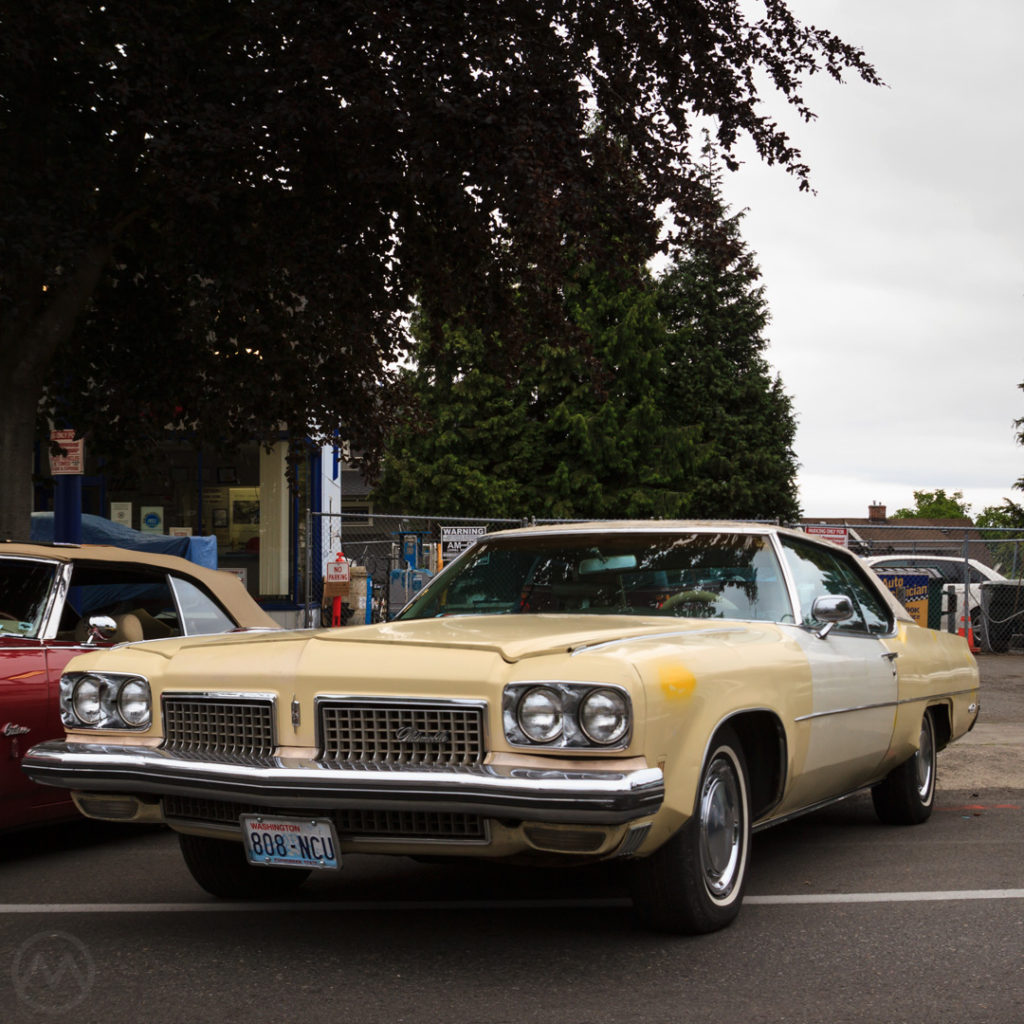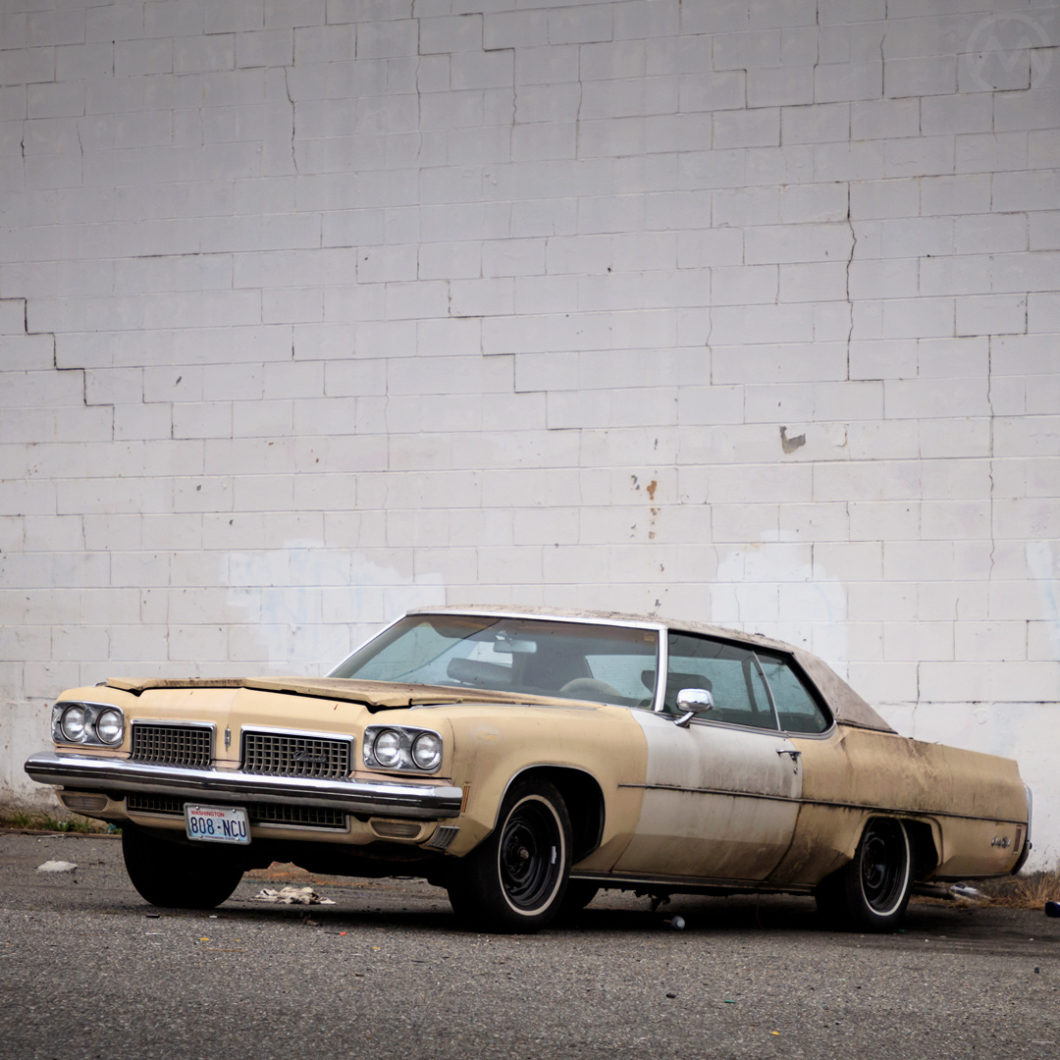It could be described as the postwar American car mantra – “longer, lower, wider,” even if the trend arguably began in the 1920s.
The proportions of “standard” American cars grew progressively larger and lower-slung after 1954, and the “long, low, and wide” ethos reached its apogee in the early 1970s – and at GM, on the 1971-76 C-body cars, the company’s biggest shy of the D-body Cadillac Fleetwood 75 and Limo.
Oldsmobile’s 1973 98 measured 230” (5.8M) long and weighed 4,500 lbs. as a hardtop coupe. In those days, designer Len Casillo once recalled, “there were no restrictions.” But it didn’t last.
Oldsmobile’s flagship, the 98 series dated back to 1941 – at first it was the 90 series and in 1941 there was also a “96.” The Ninety-eight had ridden the C-body with Cadillacs and the top Buicks ever since.
Oldsmobile’s Flagship
The 98 was always “Oldsmobile’s Cadillac,” but it was typically a more stylistically restrained car than its cousins. Like Lancia sedans in Italy or Humbers in England, the 98 was for people who had means and wanted luxury but didn’t necessarily want to show off.
In the 1960s, the car developed a slab-sided aesthetic, with skirted fenders and subtle detailing. The biggest ever 98 debuted on September 10, 1970, longer, lower, and wider and with new sculptural sides with a fuselage-like tuck-under, fashionable and stately. Power came solely from the giant Olds 455.
The big Oldsmobiles sold well through 1973, and the 1970 were very good for Olds, although at the time even many fans thought the new B and C cars might be “too big.”
By the late 1960s the circa-1961 GM “compacts” had grown into “intermediate” cars that were nearly the same size as the average “standard” cars of 1955. Though bigger was better with traditional buyers, a fair number of customers were moving to “intermediates” just because the big cars were unwieldy and, of course, more expensive depending on configuration.
The OPEC crackup
In October of 1973, big cars collided with the OPEC iceberg and within a year, sales of the big Oldsmobiles had halved, leaving the soaring Cutlass as the division’s sales leader – permanently.
Big car sales recovered a bit by 1976 as memories of the oil shock began to fade – but ever since late 1972 GM had been working on downsized large cars, which debuted that fall. The smaller big cars made their predecessors (and, to a degree, the holdover 1977 mid-sizes) seem instantly old. When the second oil crisis hit in 1979, the modestly-recovering resale values of used big cars sank like a stone.

With the glory days gone, the big 98s were cherished or chucked – they were huge inside and quiet, cosseting highway cruisers, but had low values and were expensive to run, a bad combo for careful ownership. In the 1980s and 1990s, it was not uncommon to see them in run down shape like this for sale for only a few hundred dollars.
This unfortunate 98 has not been moldering away for years, but was actually at car shows as recently as 2016, though it wasn’t in the best condition at that time. Sadly going for scrap now thanks to neglect.
Big cars are big projects and despite relatively simple mechanicals things could be costly – these were, after all, flagship luxury cars even if you could buy them for beer money for years.


This one could be the one I did own in California in 1981-82… At that time the plate was different, it was a blue with yellow lettering plate…California 205 H7F….